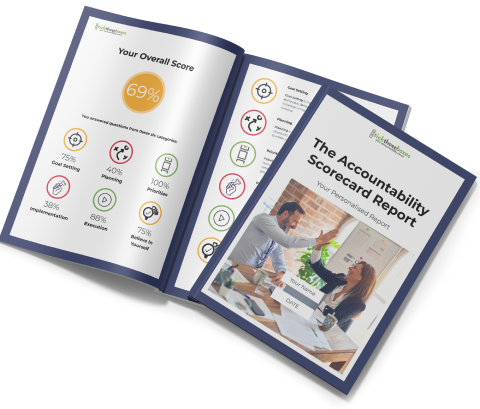
Posted on: 04/10/2023

In today’s rapidly evolving business landscape, organizations are witnessing a unique confluence of generations within their workforce. Traditionalists, Baby Boomers, Generation X, Millennials, and Generation Z work side by side, bringing diverse experiences, perspectives, and work styles. While this diversity enriches the workplace, it can also pose challenges, especially when fostering a culture of accountability. Bridging the generation gap and promoting accountability within a multigenerational workforce is a crucial endeavour that demands a strategic approach.

Discover your Accountability Score and increase the probability of smashing your GOALS and Getting Sh!t Done!
Each generation has values, communication preferences, work ethic, and technological fluency. Understanding these differences is the first step towards promoting accountability across generations.
The multigenerational workforce presents various challenges when it comes to fostering accountability:
Organizations should implement strategies that acknowledge and leverage the strengths of each generation while addressing their unique challenges to create a culture of accountability that transcends generational differences.
Clearly define performance expectations and goals for all employees, regardless of their generational background. Align these goals with the organization’s mission and values to create a sense of purpose and direction.
Facilitate mentorship programs where experienced employees can guide and share their knowledge with younger colleagues. Simultaneously, reverse mentoring should be encouraged, where younger employees can impart their technological expertise and insights to older generations.
Implement regular feedback mechanisms and recognition programs that appreciate employees’ efforts and contributions. Tailor the feedback process to suit the communication preferences of different generations, ensuring it is well-received and meaningful.
Invest in ongoing training and development opportunities for all employees. Provide access to educational resources and encourage a culture of continuous learning to keep all generations updated with the latest industry trends and technologies.
Start by fostering mutual understanding and appreciation among generations. Conduct workshops or training sessions highlighting each generation’s strengths and contributions, promoting empathy and respect.
Implement a flexible communication approach that caters to different preferences. To ensure adequate information sharing, utilize various communication channels, including face-to-face meetings, email, video conferencing, and messaging apps.
Integrate user-friendly and intuitive collaboration tools that accommodate varying levels of tech proficiency. Provide training and support to ensure everyone can effectively utilize these tools for enhanced productivity and collaboration.
Facilitate mentorship programs where experienced employees can guide and share their knowledge with younger colleagues. Simultaneously, reverse mentoring should be encouraged, where younger employees can impart their technological expertise and insights to older generations.
In the dynamic landscape of modern workplaces, the amalgamation of generations within a workforce offers a vast reservoir of perspectives, skills, and knowledge. Bridging the generation gap and fostering a culture of accountability is not merely a challenge to overcome; it’s an opportunity to tap into this diversity and drive organizational success. By understanding and respecting each generation’s unique characteristics, implementing flexible communication strategies, encouraging mentorship, and promoting cross-generational collaboration, organizations can create an environment where accountability thrives, and success follows suit. Tailoring communication strategies, acknowledging varying work ethics and expectations, and leveraging technology appropriately can facilitate smoother interactions and collaborations. Mentorship programs can be transformative, where experiences are shared, and wisdom is exchanged. Encouraging younger generations to mentor their senior counterparts in technology and innovation while seniors guide them with their wealth of experience and industry knowledge can create a symbiotic relationship beneficial to all. Embracing this diversity and building upon the strengths of each generation can propel businesses towards greater productivity, innovation, and long-term success.
I was excited to join Tia Harmer on The Work in Progress: The Personal Productivity Science Insights Podcast! We dive deep into the science of goal setting and the power of accountability—two cornerstones of business and personal success.